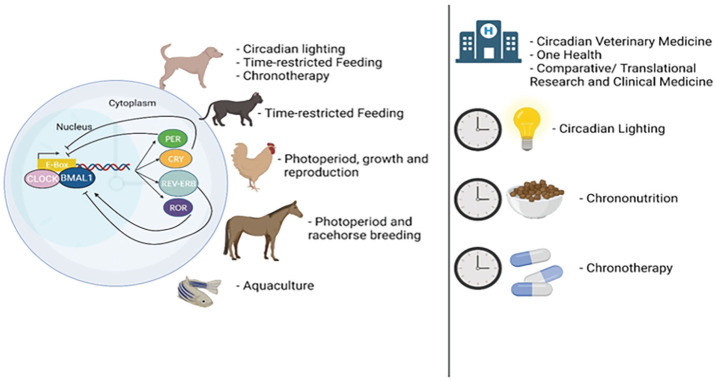Figure 1.
The emergence of circadian medicine for non-human animals has arrived. The circadian mechanism involves a complex interplay of genes and proteins operating in a feedback loop, cycling approximately every 24 h. The factors exhibit coordinated fluctuations, governing both the physiologic and behavioral rhythms in animals. Circadian medicine, a novel therapeutic field, leverages the body’s circadian biology to optimize health, enhance welfare, and modulate responses to diseases. Innovative strategies demonstrating promise for dogs include circadian lighting, time-restricted feeding, and chronotherapy. Time-restricted eating also holds potential for reducing obesity and associated health issues in cats. Manipulating the photoperiod has shown applications in chickens to enhance growth and reproduction. Photoperiod considerations have also shown proven benefits for the racehorse breeding industry. Moreover, considerations around photoperiod manipulation have also proven beneficial for aquaculture and food safety for humans. These applications of circadian medicine notably intersect with Veterinary Medicine’s new frontiers, One Health initiatives, and Comparative/Translational Research and Medicine, bridging the gap between non-human animal and human health. Notably, some of the most promising circadian medicine strategies as discussed in this review include circadian lighting, chrononutrition, and chronotherapy, each presenting considerable potential to extend the lifespan and improve the well-being of non-human animals, transcending benefits solely for humans.

